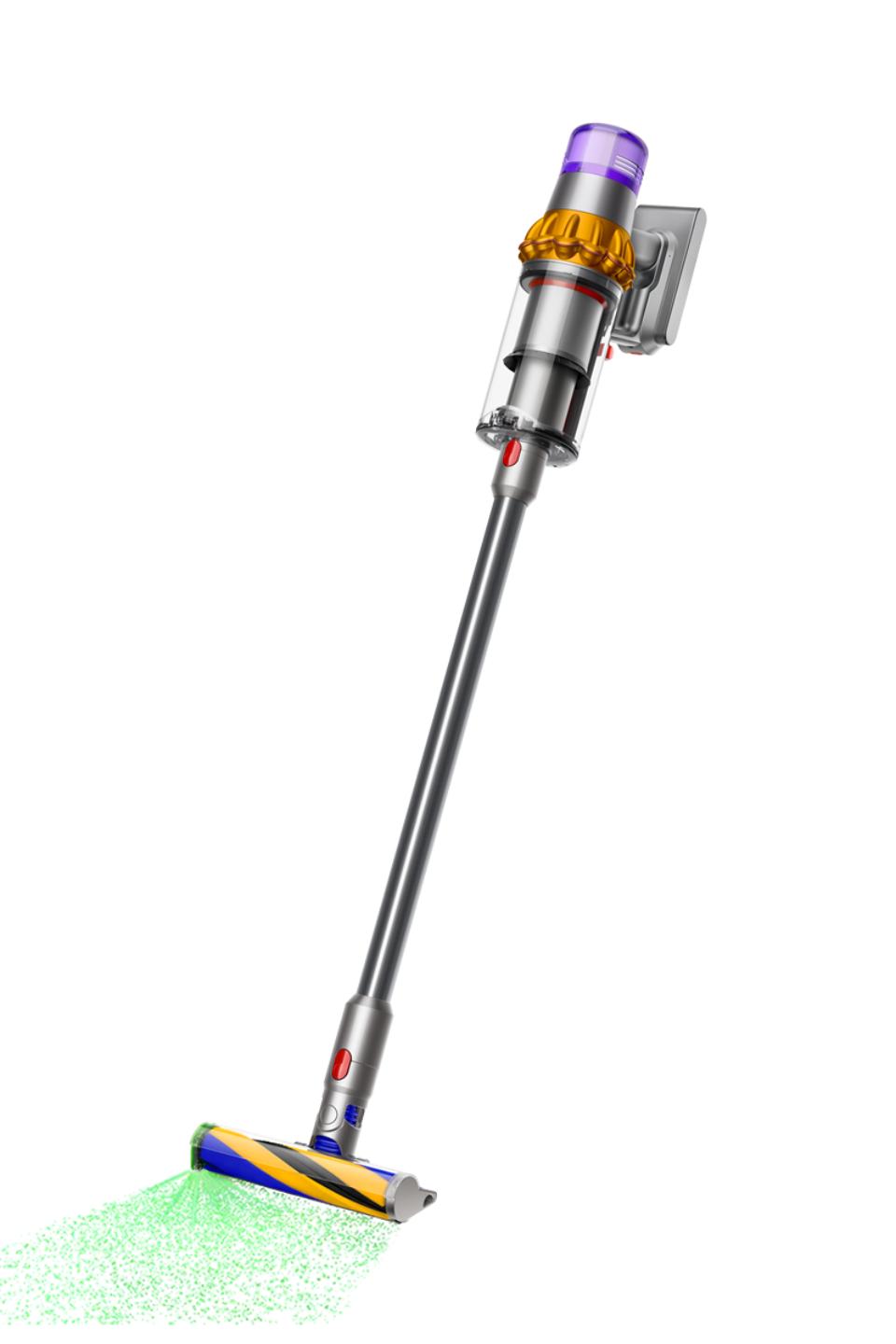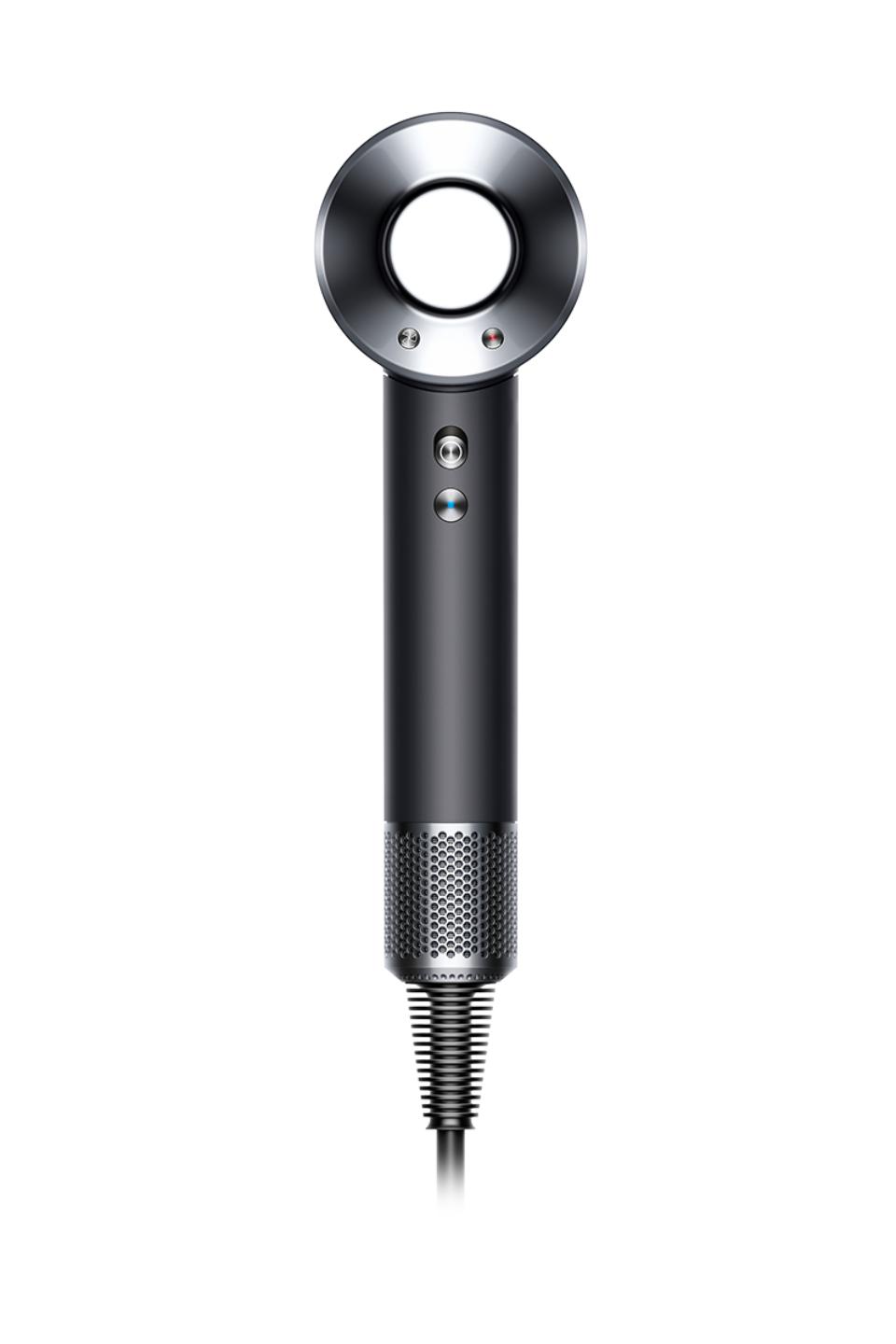Dyson V15 Detect™ vacuum (Iron)
The most powerful, intelligent cordless vacuum. Counts and measures the size of dust particles. Scientific proof of a deep clean. Two cleaner heads engineered for deep cleans.
Laser Slim Fluffy™ cleaner head has a laser that detects the particles you can’t normally see
A precisely-angled laser makes invisible dust visible on hard floors – so you don’t miss anything.
Counts and measures the size of dust particles⁺⁺
A piezo sensor continuously sizes and counts dust particles – automatically increasing suction power when needed.
Scientific proof of a deep clean
The LCD screen shows what’s been sucked up, displaying real-time scientific proof of a deep clean.
Dyson Hyperdymium™ motor
The Dyson Hyperdymium™ motor spins at up to 125,000rpm to generate the most powerful suction of any other cordless vacuum.⁺
Root Cyclone™ technology
Dyson’s patented cyclones generate centrifugal forces of up to 100,000g trapping fine dust and dirt in the bin, so your vacuum never loses suction.
Energy-dense battery
Each click-in battery provides up to 60 minutes of run time to clean everywhere around your home.*






by John
This is my first cordless vac since the V6 Absolute, and all I can say is … WOW! After using the V15 Detect for over a week, I absolutely love it. Lots of incredibly smart improvements make it clear that a ton of thought and research went into making this new machine as great as it is. We’re a cat home, and this vac does an excellent job cleaning up animal fur–and the redesigned heads don’t get tangled at all. The laser attached to the hardwood-floor cleaning head reveals all kinds of dust and dirt you thought you got–and as someone with pollen and dust allergies, I find this especially useful. Plus, the way that the machine automatically adapts suction when going from hardwood floors to carpeting is a game-changer. After a long winter indoors, this is going to be the ultimate tool for spring cleaning (and beyond)!
by Faro
This product is wonderful. It was embarrassing to see how much dust was in the canister after using it on a room which was supposedly clean.
by Kevin
I have three V11 models and was excited to try out the new improvements on the V15 Detect model – especially its ability to auto react to dust and floor type. The V15 performed significantly better for me than the V11 on my hardwood floors and carpets. It picks up larger objects and micro dust much better. The laser sensor shows when you are picking up invisible micro dust which allows you to better clean your floors.
The redesigned tools were a pleasant surprise – most of the tools have been improved. I really appreciate the anti-tangle comb. After using the vacuum for a full 60 minutes, there was no hair on the comb. All the hair made it into the canister (see photo of comb after use). The V15’s ability to auto react to floor type was noticeably smooth when switching from hardwood to carpet – it reacts better than the V11 model which I would stop and re-adjust.
My overall experience has been quite positive with the V15. I look forward to replacing my V11 models with more V15s in the near future.
Thank you Dyson for engineering another great product!
by Nicky
I am the proud owner of a Dyson V6 and Dyson DC25 Upright Motörhead. I received the Dyson Detect a little over a week ago and this vacuum has solved all the small things that I disliked about my V6. Suction, Canister Size and Ease of emptying are all significant improvements. Now lets get to the real technology, the Dyson Detect has a laser on the hardwood floor head which allows you to see dust and debris that is present on your floor. Normally, I wouldn’t think that this technology is needed but I will say that it unbelievable what you can’t see. The digital display on the head of the unit allows you to switch power modes, shows battery runtime and detects the micron size of the particles that you have just vacuumed up. Again, not a feature that I thought I’d like but I will admit I did enjoy knowing how much dirt I just vacuumed up and of what size it was. On Auto mode the Dyson Detect automatically detects floor type and amount of dirt and adjusts the motor accordingly – which to me is well, kinda amazing and awesome. There are lots of accessories with this vacuum – multiple heads for any job you could think of. I will say that because of the way you empty this canister you need to remove all attachments prior to emptying. The downside to this is only that the extension pole doesn’t come off as easily as I’d like. This is a very impressive vacuum and one that will be an asset to any home (big or small).
by Andrea
The latest handheld has a laser feature that shows dust you wouldn’t otherwise know is there. It’s amazing how much you miss. It has an electronic indicator for suction, battery life and mode. The battery indicator is really helpful. The machine comes with all the standard attachments plus the laser head. It can also carry 2 attachments on the arm which is handy. It’s a little heavier than the earlier versions we have but having it run longer is the payoff. Overall it’s a great vacuum.
by Eddie
I have had the v15 for about a week and the having had the v6 and the v10 I wasn’t sure how much of an impact the features that the v15 brings to the table would be. After a week of usage I can say hands down that the new tech on the v15 not only enhance to overall usability of the machine, it is actually somehow a lot more fun to use.
My first impressions after a week are far more positive than I expected.
by Inno
There are so many features to like about this unit , The selective energy savings depending on the type of cleaning you are about to do , Great battery running time . Whisper quiet to Boost mode handles everything from light dust on laminate floor to heavy hallway carpet dirt extraction.
Hair screw tool works great for my girlfriends long hair , no more tangling around the roller , Gets directed to the end then finally gets vacuumed up the tube into the bin , Works great picking up hair from Long haired Persian cat as well
I used the laser slim fluffy head , This floor attachment with laser is pure genius , You can see the dust on the floor and dirt on carpet so much easier , One of my many favorite tools .
Installation is incredibly easy , Lightweight , Cleaning out the dirt bin is super easy . I cannot say enough nice things about this awesome Dyson cordless. Helps me be efficient with my cleaning . I would highly recommend the v15 Detect.
by Yeti
We are veteran Dyson owners, and we’re accustomed to the changes in technology as Dyson introduces new models. The V15 Detect has taken this to a new level. The soft head is exceptional, as always, in picking up small particles from hard surfaces, which is our particular challenge. But the addition of a laser beam on this head highlights what we routinely miss, and that’s made a significant difference in how we deal with pet dust (two parrots and a cat). In addition, the V15 includes a head that makes it easier to reduce hair buildup, which is a significant advance in convenience for maintenance. In sum, the V15 is a cordless vacuum that changes the cleaning game.